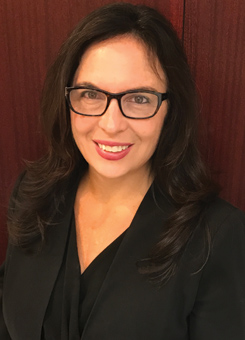Mental Health Is a Public Health Crisis. Here Are 5 Ways to Help.

By Marion M. Walsh
As Mental Health Awareness month ends this weekend, let us remember Tiffany Kingwood and other sensitive souls. Ms. Kingwood was 37 years old. On October 18, 2019, she drove her car into the Hudson in Verplanck and died, reported as an apparent suicide. From all reports, she was kind, talented and loved. No one has the answers on why. She represents one among thousands who took their own lives this year. In the United States, an individual completes suicide every 12 minutes. In the world, according to the World Health Organization, it is every 40 seconds.
I did not know Tiffany or her family. I live in a nearby community and her death resonated with me. I do know that we have a devastating public health crisis in the U.S. that we are not addressing. Each year, at an increasing rate, we lose close to 50,000 due to suicide, according to the Center for Disease Control (CDC). Worldwide, we lose at least 800,000 people each year, according to the World Health Organization. According to the CDC, suicide ranks as the second leading cause of death for ages 10–34—yes, for age 10,. The effects of mental health conditions are devastating for families and for society. Depression, for example, is the leading disability worldwide. Now with COVID-19, the difficulties are even greater for all.
The numbers seem so large and problem of the suicide rate seems insurmountable. Despite the staggering numbers, we barely report on the cases collectively. There is no consolidated, uniform public health approach. Instead, we tend to view each report of a suicide as an individual tragedy. Yet those with mental health conditions do not represent a separate part of the population, but are us. We all have mental health and the potential for conditions that affect our lives, jobs and relationships. There is still too much stigma, inadequate services, a lack of research and no uniform viable public health approach.
I am not a therapist or mental health professional. I practice law in the area of education law and advocate on behalf of families and students. I represent vulnerable students, including students with learning and emotional disabilities and advocate for appropriate services. In my practice, the most complex and under-identified needs arise from students’ mental health concerns. From my perspective, while many school districts provide general education for students on mental health, few take the affirmative steps of referring students who need for needed services under federal law as mandated. Due to the devastating issues, I have volunteered on the Board of the National Alliance for Mental Illness in Westchester (NAMI Westchester) and volunteered for the past four years.
May is Mental Health Awareness month and as we approach the end, I ask all to consider steps to take to address the issue. WHO notes that effective and evidence-based interventions can be implemented both for entire populations, subgroups and individual levels to prevent suicide and suicide attempts. Advocating to end stigma and for to assist those with mental health conditions is a social justice movement to help those disenfranchised, isolated and misunderstood. The work and support is essential.
Each person can make a difference. Here are just five things to do:
- Speak up. Mental health affects everyone and is part of the human condition. As noted, one in five have a mental health condition and, chances are, each one of us or family members have experienced debilitating depression and anxiety. We can end the pervasive and undeserved stigma that our society still perpetuates for individuals with mental health disorders by speaking up for others and reaching out to friends and neighbors. Stigma leads to isolation, decline and inappropriate services.
2. Become Educated on Warning Signs and What to Do. It is important to know the warning signs of depression, suicidal ideation and what to do. NAMI though the Ending the Silence Program, educates teens and families on suicide prevention and mental health awareness.
- Support Groups who Offer Hope and Support. There are many programs available to support but all are underfunded and need support. In a fractured mental health system based on community services, there is often no community. Find a group to support As one example, NAMI’s commitment to build a community helps those in need through support groups and activities, helps piece together and create a community for vulnerable individuals.
- Advocate. For families in supporting loved ones, advocacy is essential but difficult. Advocate with legislators.
- Join a virtual walk Saturday. Please consider joining a NAMIWalks event this Saturday, which the public can still donate to until June 15, or supporting NAMI Westchester: https://www.namiwalks.org/
Marion Walsh is a partner at the White Plains and NYC Law Firm of Littman Krooks LLP. She resides in Cortlandt and has served on the Board of NAMI Westchester for two years and volunteered for four years.
Sources:
WHO: Worldwide suicide stats
https://www.who.int/mental_health/prevention/suicide/suicideprevent/en/
WHO: Depression
https://www.who.int/health-topics/depression#tab=tab_1
every 40 seconds
https://www.who.int/news-room/detail/09-09-2019-suicide-one-person-dies-every-40-seconds
NAMI Westchester
Suicide at beginning of article
http://westchester.news12.com/story/41202466/car-plunges-into-the-hudson-river-in-verplanck
https://www.theexaminernews.com/verplanck-woman-identified-as-victim-in-car-plunge-in-hudson/
Youth rates in US:
https://www.cdc.gov/nchs/products/databriefs/db362.htm
Suicide Rate in US:
Increasing Rates: https://www.cdc.gov/nchs/products/databriefs/db362.htm

Examiner Media – Keeping you informed with professionally-reported local news, features, and sports coverage.
